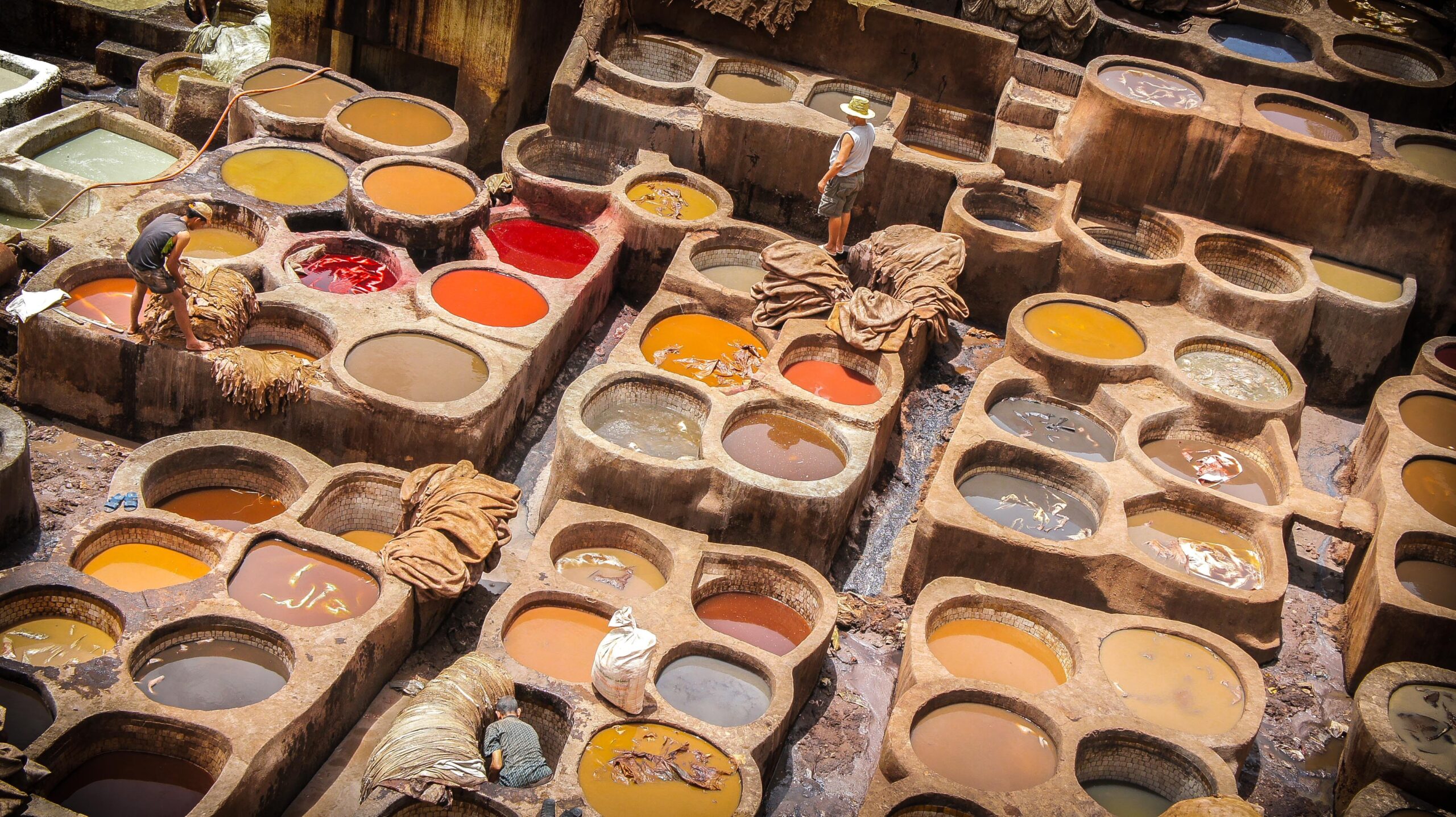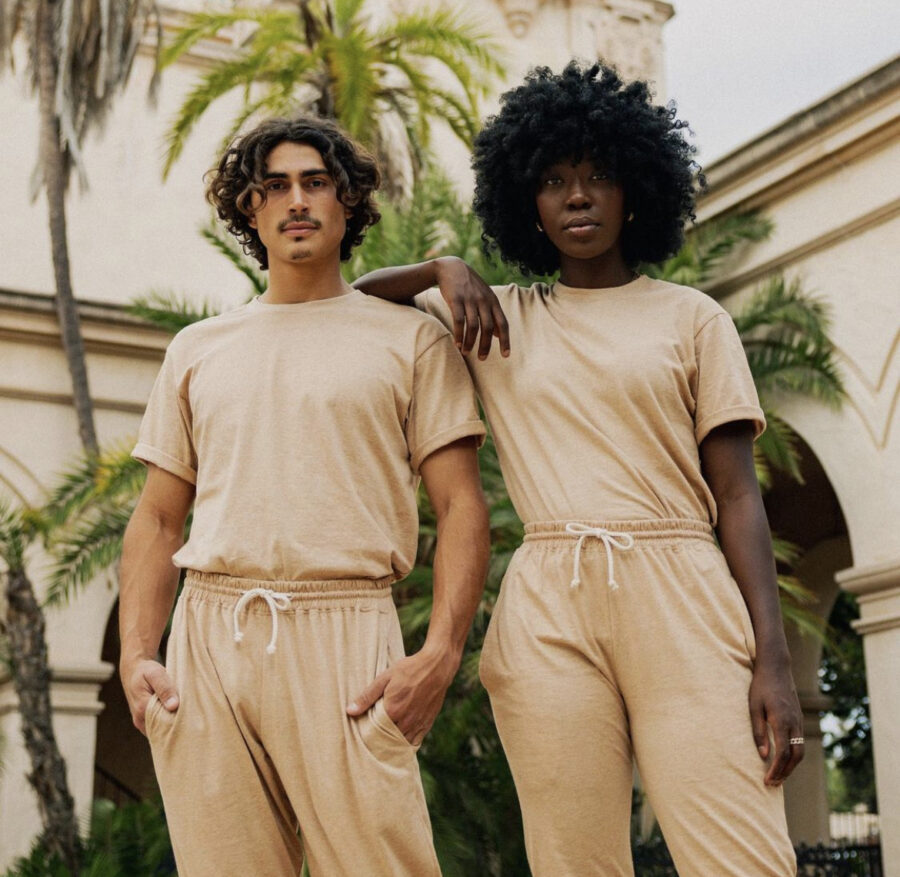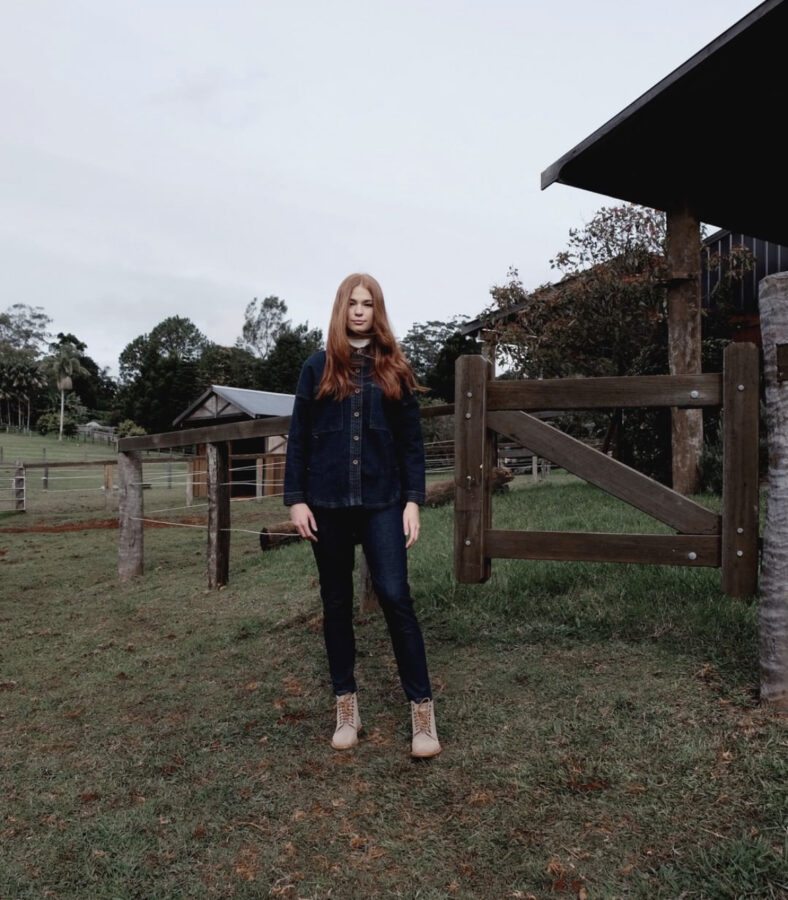I’ve identified as half-a-hippie for years. On one hand, I’m a fearless champion of eco-fashion. On the other, I’m a design freak who will RUN the second something skews too handcrafted.
I don’t make my own clothes or dye them pink with avocado peels. I bought a sewing machine last month and the unopened box is resenting me as I type this article. Research is my thing. I leave the design work to the experts. But two things happened recently that piqued my interest in exploring my hippie half more, especially when it comes to natural or “plant-based” dyeing.
Why I’m exploring natural dyes
First, I interviewed a farmer who processes hemp for fiber for another story. I asked him if people understood his business model and the importance of bringing hemp back. He only had to tell me one thing to make his point. When telling someone about his business, they asked him, “So you’re making t-shirts out of a plant?” Completely deadpan. Like they thought this was a novel idea. (Bringing the processing capacity back is, using hemp is not).
I’ve heard and told this story many times. It goes like this: we’re too removed from the story of our clothes. We don’t know how they get made or who makes them. And most of what we wear today is an amalgam of petroleum and chemistry. But damn…I didn’t think it was so bad that people forgot all clothes used to come from natural fibers. Or that cotton was a plant altogether.
I used to draw parallels between food and fashion often. Perhaps it’s time to dust off those analogies again.
The other thing that led me to natural dyes was a workshop by Soul Studio. They told attendees to bring a dirty or old garment they wanted to revive with plant dyes and matter. I chose a vintage top that “fell” into the wrong load and turned Pepto pink. In 30 minutes, I prepped the garment with a natural solution; applied Cutch, a natural dye from the Acacia catechu tree that produces rich cinnamon and nutmeg colors; tossed on some flora; rolled the thing up like a burrito, and tossed it into a steam bake.
Clearly, I’m not a plant dyeing expert. But seeing the results of this shirt, I was a had a smidge of hope in the potential of my craftiness and was eager to learn more about natural dyes. Here it goes.
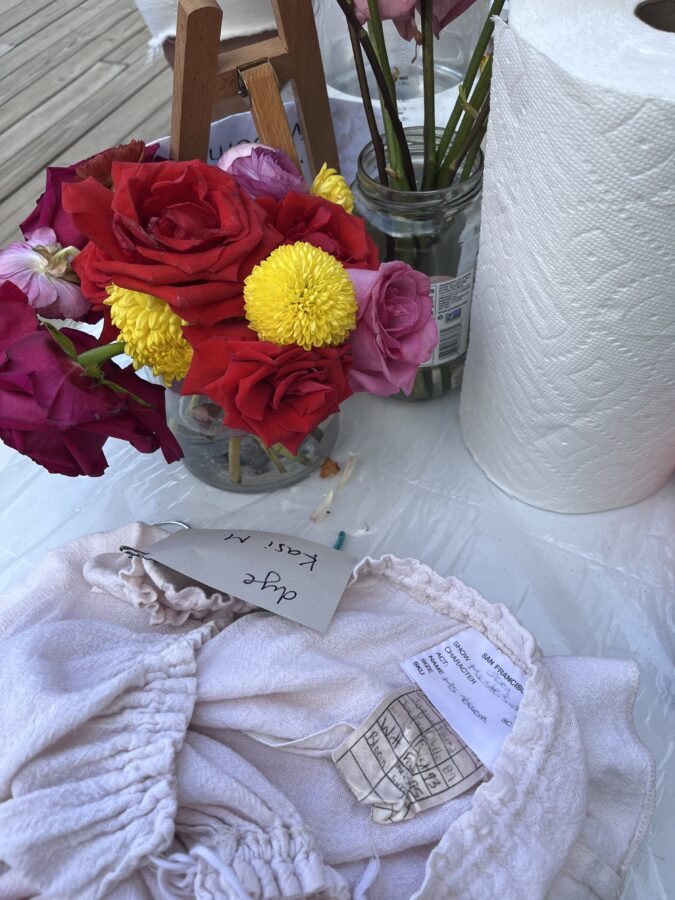
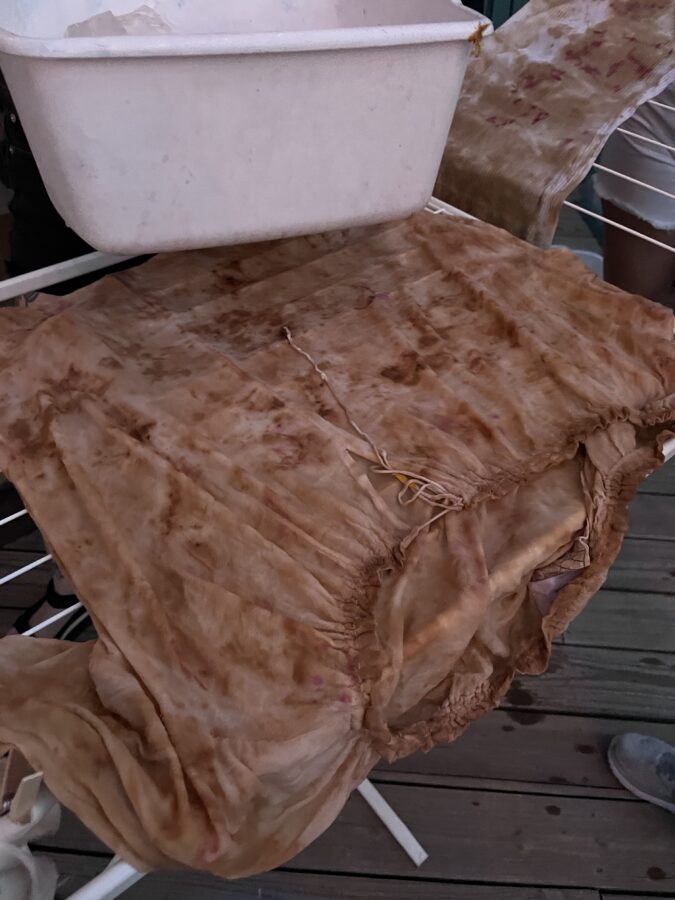
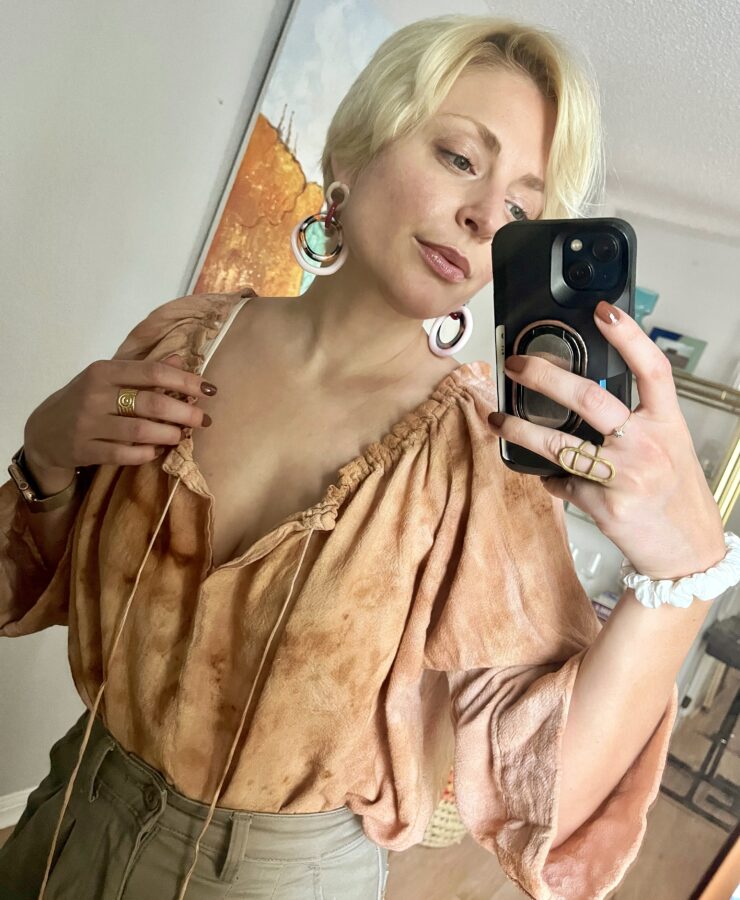
The fraught history of synthetics
Natural dyes were used in clothing for centuries, with Madder (red) and Indigo (blue) being the most common. But in 1856, an English chemist accidentally created the first synthetic mauve dye when he was experimenting to find a treatment for malaria. Synthetic dyes then spread from London to Paris to America. By the 1860s they had become big business at the behest of capitalism.
In 1863, chemists developed the first true azo dye, called Bismarck Brown, in England. Other colors spun off from there, and Germany began dominating the production of AZO dyes after it beat an English company to create the first patent. (Ironically, Germany’s OEKO-TEX standard bans specific azo dyes in the country today).
Through the 20th century, designers, brands, and consumers heralded azo dyes for their economic efficiency and vibrant hues. Today, they account for over 50 percent of the world’s annual production. In cotton production alone, azo dyes are the most important chemical class of dyes, accounting for 60-70 percent of all dyes used.
Azos: known, yet persistent carcinogens
Despite their popularity, azos have been known carcinogens since 1895, when scientists observed increased rates of bladder cancer in workers involved in dye manufacturing. Although some azos are non-toxic, numerous studies have demonstrated others are mutagenic and carcinogenic.
But here’s where things get tricky: the carcinogen may be the dye itself, or it may be a metabolite of the dye. For water-insoluble dyes such as solvent dyes and disperse dyes used for synthetic fibers like polyester, the dye is normally the carcinogen. For water-soluble dyes used on natural fibers like cotton, the carcinogen is a metabolite of the dye. This means the dye splits into what’s called an aromatic amine, 22 of which are classified as carcinogenic. The dye splitting into a carcinogenic amine happens in about 4-5 percent of the dye instances.
These water-soluble dyes become carcinogens when they are converted back to free amines by perspiration (so wearing or working with them causes a toxic reaction). Dyeing is also the most water-intensive process along the fabric supply chain, meaning toxic dyes end up in waterways and ecosystems, which bioaccumulate in the environment and food chain and endanger wildlife. About 20 percent of industrial water pollution globally is attributable to the dyeing and treatment of textiles.
Are azo dyes banned today?
I know this was a deep chemistry tangent. But it’s important context so you can understand the regulations on azos. For instance, it’s a common misconception that the EU “bans” azo dyes and the US does not. In reality, the EU has more enforceable and specific regulations than the US on azos and aromatic amines (at least that I could find).
The EU’s REACH regulation, for example, lists 24 kinds of aromatic amine compounds considered carcinogenic or otherwise harmful to humans and regulates the amount used in any textile or leather product that comes into direct and prolonged contact with the human skin or the mouth. Other countries outside the EU that ban the 22 aromatic amines, and thus specific azo dye, are China, Japan, India, and Vietnam.
Compliance Gate states that “various” aromatic amines are restricted or banned in the US. Other sites also mentioned that the US is on the list of banned countries, but I could not find specific details. The state of California, through Proposition 65; however, is clear about banning azo dyes that produce aromatic amines.
Despite these regulations, which many go unenforced, it’s important to note that azo dyes have not been addressed globally. It follows that unregulated producing countries using azos are still causing harm to global ecosystems and people.
Opting for natural dyes
So what should you do with this information? Use it to exercise vigilance. The CPB and FTC, which govern textiles, apparel, and footwear, only require labels to have fiber content, country of origin, the manufacturer or dealer identity, and the care instructions. When shopping, look for information on the brand’s website about their dyeing practices or reach out to them directly. You can also look for brands that comply with the OEKO-TEX Standard, a four-tier system that evaluates the toxicity of chemicals present in clothes.
Or better yet, shop these brands I’ve vetted for you. Just be sure you look for dyeing information, as some brands offer naturally-dyed lines alongside conventionally-dyed ones.
Disclaimer: The Peahen sometimes contains affiliate links, which means I may earn a small commission if you choose to shop through our links. This does not affect my editorial decisions, and I do not allow sponsored ad placements within guides like these. Thank you for your support!
Pretty things
- Christy Dawn – This OG sustainable brand uses deadstock and natural fibers and dyes with natural and organic dyes. Check out the brand’s practices in its fabric glossary.
- Miranda Bennett – This Austin-based brand plant dyes everything in-house. This season, the batch of Mexican Mini Marigold, which grows native to Texas, is especially ravishing.
- VALANI – This collection of easy-to-wear dresses and separates is colored with non-toxic dyes with no synthetics. It’s unclear if these dyes are 100 percent plant-based, but they’re 100 percent better than SheIn (please don’t).
- The Ziran – This is perhaps the most unique (and expensive) brand on the list. The Ziran dyes its silk with the “shu liang” root, a type of Chinese yam; bakes the silk in the sun, and sweeps mud from the Pearl river over it to create a chemical reaction that yields a unique garment each time.
Basic things
- Harvest & Mill – This unisex basics brand uses natural colors, like California clay and Indigo, for softer colors and non-toxic options to produce rich blacks.
- KENT – This undies brand uses GOTS-certified dyes to produce white and black lines and plant-based dyes made from fruits, flowers, minerals, and spices for small-batch colors.
- Hemp Temple – This pre-order, slow fashion brand uses only natural dyes to make its down-to-earth hemp garments.
- Objects Apparel – This funky, made-in-Detroit brand is one of the few to create prints with natural dyes and non-toxic inks.
Tough things
- Triarchy Denim – This brand pioneered the world’s first plastic-free stretch denim (hint: it’s made with natural rubber) and also uses 80 percent fewer sulfates in its indigo dye.
- MUD Jeans – This eco brand’s impact is 51 percent lower than the industry standard. Look for its “undyed collection,” which skips the dyeing and wash process and uses 92 percent less water than average.
- Outland Denim – This brand offers a wide range of indigo-dyed denim and basics dyed with vegetables, organic dyes, and dyes that have been tested for toxic chemicals.
- Older Brother – This quirky denim brand bans heavy metals and toxins in its dyeing process, opting instead for indigo, madder root, and natural tannins found in many plants.
Exploring natural dyes at home
No need to be a hippie to roll up your sleeves and get into some dye. Here are a few ways you can start:
- Go to a dyeing workshop in your city or find a virtual class on skillshare
- Go foraging. Dandelion, blueberries, maple, and onions are abundant plants you can use. Or explore the Fibershed natural dye marketplace.
- Pick a natural mordant from this list.
- Read this post for a simple home process using your machine process.
Good luck in your plant-dyeing endeavors. I can’t wait to see what you make!
Sources:

